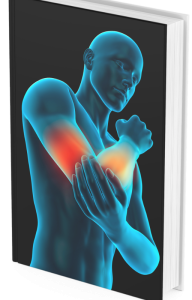is a popular form of exercise known for its ability to improve strength, flexibility, and overall body awareness. However, one of the lesser-known benefits of
Pilates is its effectiveness in alleviating back pain. Whether you are a young adult experiencing occasional back discomfort or an older individual with chronic back issues,
Pilates can be a valuable tool in managing and reducing pain in the back. Pain in the back, or back pain, is a common condition that affects individuals of all ages and can have a significant impact on their daily lives and professional productivity. It refers to discomfort or pain in the area between the neck and the pelvis, including the upper, middle, and lower back.In a professional setting, individuals experiencing
back pain may encounter various challenges and limitations. They may find it difficult to sit for prolonged periods, affecting their ability to focus and concentrate on tasks. Back pain can also hinder mobility, making it challenging to move around the office or undertake physically demanding work responsibilities.Furthermore, the physical discomfort and limitations caused by back pain can lead to decreased energy levels and increased fatigue, impacting overall work performance and efficiency. Additionally, chronic back pain can cause emotional distress, affecting an individual’s mood, motivation, and ability to handle stress effectively.To address back pain and minimize its impact on professional life, individuals can adopt several strategies. They should consider ergonomic adjustments to their workstations, such as using supportive chairs, maintaining proper posture, and incorporating regular breaks for stretching and movement.Additionally, practicing good self-care outside of work is crucial. Engaging in regular exercise, adopting a healthy lifestyle, and managing stress effectively contribute to overall well-being and can help prevent or minimize the occurrence of back pain.Employers can also play a supportive role by implementing ergonomic policies and providing resources to educate employees about preventing and managing back pain. Offering flexibility in work arrangements, such as providing standing desks or allowing remote work when necessary, can significantly assist employees in managing their condition and maintaining productivity.
Pilates focuses on core strength, which is essential for stabilizing the spine and supporting proper posture. By targeting the deep abdominal muscles, such as the transversus abdominis and obliques,
Pilates helps to create a strong foundation for the spine. Additionally,
Pilates emphasizes alignment, breathing, and control, all of which contribute to better body mechanics and reduced strain on the back.
Benefits of Pilates for Spinal Alignment and Flexibility:
One of the key benefits of
Pilates in relation to back pain is its ability to improve spinal alignment. Through a series of controlled movements and stretches,
Pilates helps to release tight muscles, increase flexibility, and realign the spine to its natural position. This can alleviate pressure on the vertebral discs and relieve tension in the back muscles, leading to reduced pain and improved mobility. Furthermore,
Pilates exercises focus on promoting a balanced and symmetrical body, which can help prevent muscular imbalances that often contribute to back pain. By strengthening both the front and back of the body,
Pilates creates a more stable and supportive core that can better withstand the demands of daily activities.
Improving Overall Posture to Prevent Future Back Pain:
Poor posture is a common cause of back pain, as it places excessive strain on the muscles and ligaments of the spine.
Pilates works to correct postural alignment by targeting key muscle groups, such as the abdominals, back extensors, and hip flexors. Through specific exercises that emphasize proper alignment and engagement of these muscles,
Pilates can help individuals develop better posture habits that can prevent future back pain.
Specific Pilates Exercises for Back Pain Relief:
When it comes to relieving back pain through
Pilates, it is important to target different areas of the back, including the upper, middle, and lower back. Here are some specific exercises and techniques that can help alleviate pain and improve strength and flexibility in each region: 1. Upper back: Perform exercises such as the Chest Lift, Shoulder Bridge, and Scapular Retraction to strengthen the muscles of the upper back and improve posture. 2. Middle back: Focus on exercises like the Spine Twist, Swan Dive, and Saw to increase mobility and flexibility in the mid-back region, relieving tension and stiffness. 3. Lower back: Target the lower back with exercises such as the Pelvic Curl, Swimming, and Single Leg Stretch to strengthen the lumbar region and support proper alignment of the spine. Case Studies and Success Stories:To illustrate the effectiveness of
Pilates in alleviating back pain, consider the following case studies of individuals who have found relief through regular
Pilates practice: – Sarah, a 45-year-old office worker, suffered from chronic lower back pain due to prolonged sitting. After starting
Pilates sessions twice a week, she noticed significant improvement in her pain levels and posture, allowing her to sit and move more comfortably. – John, a 60-year-old retiree, had been dealing with upper back pain for years due to poor posture and weak core muscles. By incorporating
Pilates exercises into his routine, he experienced reduced pain and increased strength in his upper back, leading to improved range of motion and better overall quality of life. Scientific Research and Studies:Numerous studies have supported the use of
Pilates as a form of rehabilitation for individuals with chronic back pain. Research published in the Journal of Orthopaedic & Sports Physical Therapy found that
Pilates-based exercises were effective in reducing pain and improving function in individuals with chronic low back pain. Another study published in the Journal of Bodywork and Movement Therapies demonstrated the positive effects of
Pilates on spinal alignment, muscle strength, and flexibility in individuals with non-specific low back pain. Incorporating
Pilates into Your Routine:If you are interested in using
Pilates to alleviate back pain, here is a step-by-step process to help you integrate
Pilates into your daily routine: 1. Consult with a healthcare professional: Before starting any new exercise program, it is important to consult with a healthcare provider to ensure that
Pilates is safe and appropriate for your specific condition. 2. Find a certified
Pilates instructor: Look for a qualified
Pilates instructor who can provide personalized guidance and support based on your individual needs and goals. A certified instructor will be able to modify exercises as needed to accommodate any limitations or restrictions you may have. 3. Start with a beginner level class: If you are new to
Pilates, begin with a beginner level class or private session to learn the basic principles and exercises. Focus on mastering proper form and alignment before progressing to more challenging movements. 4. Practice consistently: Aim to practice
Pilates at least 2-3 times per week to see optimal results. Consistency is key when it comes to improving strength, flexibility, and overall body awareness. 5. Listen to your body: Pay attention to how your body responds to each exercise and adjust as needed. If you experience any pain or discomfort, stop the exercise and consult with your instructor for modifications. Conclusion:In conclusion,
Pilates is a highly effective form of exercise for alleviating back pain and promoting spinal health. By focusing on core strength, alignment, flexibility, and posture,
Pilates can help individuals of all ages and fitness levels find relief from back discomfort and prevent future issues. Through specific exercises targeting different areas of the back, along with the guidance of a certified instructor, individuals can experience improved strength, mobility, and overall well-being.









